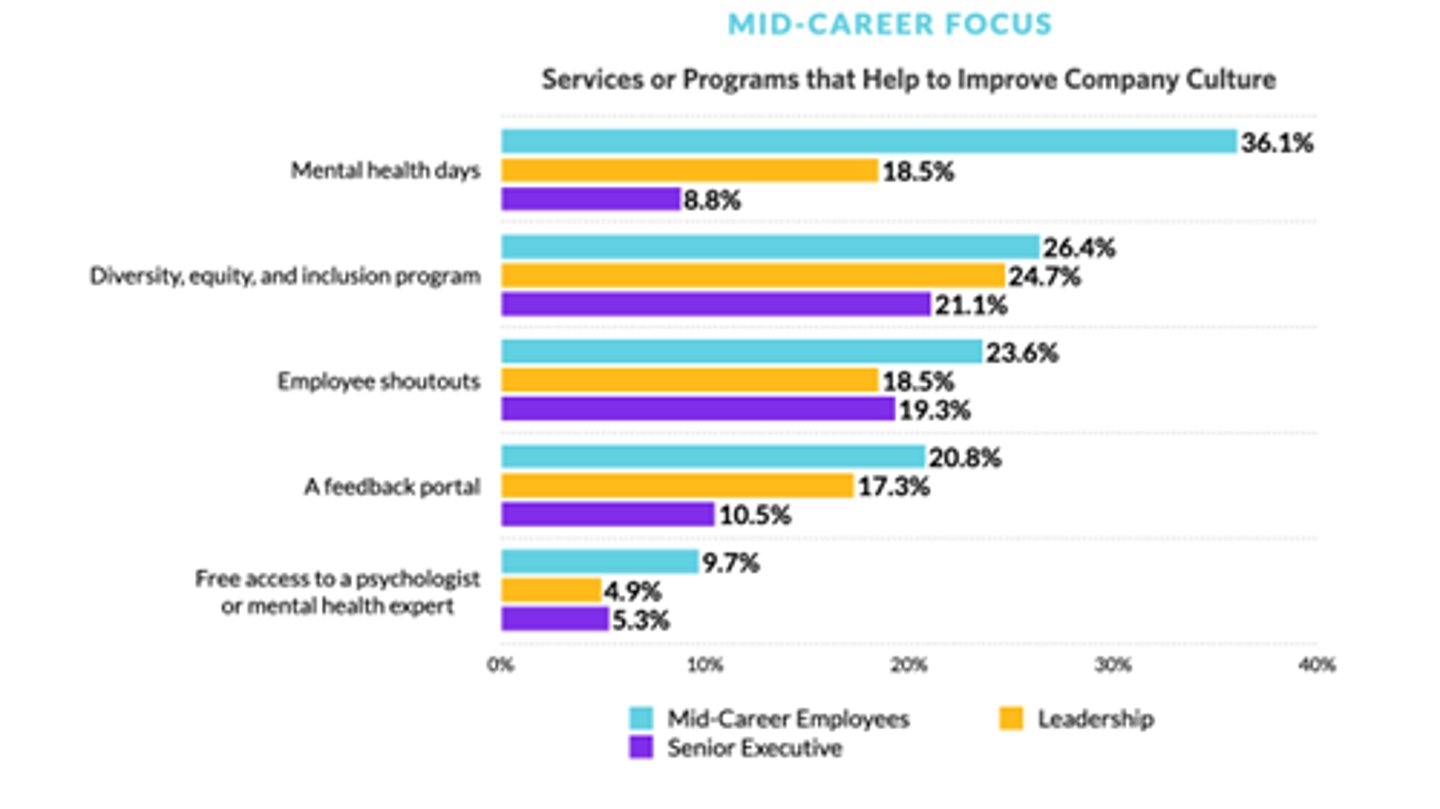The Problem Driving Millions of Hospitality Employees to Quit
As companies worldwide experience increasing employee resignations, retaining and acquiring employees has become a serious problem. And the hospitality field is no exception. CIOs and CTOs in hospitality struggle with the challenge of retaining technology workers.
No matter the organization, the problem seems to be a disconnect between employees and senior management. When senior executives were asked about the top drivers behind resignations, most said “lack of salary or paid time off”. But according to research from the Hinge Research Institute, these are not the top reasons workers give for quitting their jobs. This disconnect is serious enough that nearly a third of employees quit without having another job offer.
They Can’t Get No Satisfaction
So, what is driving employees to leave? We surveyed 284 people in mid-career, leadership, and senior executive roles to find that answer and published it with other findings in a new research study, CULTURE CLASH: The EMPLOYEE Experience Problem And How To Fix It. As we were pulling together our findings, a couple of themes kept popping up. One, lots of people are NOT satisfied with their company culture—no matter how you look at it. Two, mid-career professionals and senior executives often had different responses and perspectives on culture-related topics.
These two themes unveil a “culture clash” that is driving millions of hospitality technology employees to leave. Many CIOs and CTOs may not be aware of this culture clash or that these themes represent the primary drivers prompting so many resignations.
For example, take a look at this chart:
More than 48% of mid-career staff are dissatisfied with their current company culture while only 10% of senior executives are dissatisfied with their culture. That is a noticeable difference in opinion and may impact how certain culture-related decisions are or aren’t made.
A Difference in Perspectives
Wanting a better company culture is definitely a key driver of the culture clash. It is the number two reason respondents gave for quitting their jobs in the past year (see the chart below). The number one reason: “I was frustrated with leadership/management at my previous job.”
Let’s look deeper into these contrasting perspectives. As the following chart shows, employees are dissatisfied with their company culture for many reasons. A number of these reasons tie back to interactions with, or decisions made by, senior executives, including:
- Not feeling comfortable sharing thoughts with leadership
- Not receiving transparent leadership
- Not getting a clear promotion path
- Not obtaining adequate training
The difference in perspectives between senior executives and mid-career professionals lies at the heart of the problem of dissatisfaction with company culture. Notice what is not at the top of the list driving culture dissatisfaction: salary, paid time off, or work-life balance.
Not seeing eye to eye continues when we ask for recommendations to improve company culture. As shown in the chart below, mental health days rank highly with mid-career employees at 36.1%. Yet only 8.8% of senior executives selected mental health days as a culture improvement option. As we mentioned in our earlier report Navigating the Mid-Career Talent Crisis, senior executives may not be aware of the stress and frustration mid-career professionals are under.
Typically, it is the mid-career staff that works with senior management to develop strategies. They then work with junior employees to execute against those strategies. The mid-career team is usually responsible for assigning work, motivating employees, and ensuring that goals are met. They are the ones who roll up their sleeves and get their hands dirty when necessary. At the same time, they are managing remote resources, changing schedules and priorities, and more. Many have reached their wit’s end managing all of these moving pieces and making sure they and their team stay healthy and safe.
Their perception that the corporate culture doesn’t meet their needs or that they don’t get sufficient support from senior management is enough to push them over the edge and to find a new job, start their own business, or take some time off to regroup.
Talk a Walk in the Other Person’s Shoes
For those hospitality technology executives who didn’t know about culture clash, hopefully your eyes have been opened and all parties can come to the table and begin discussions. Perhaps you need to start with more specific research about your organization. For those of you who knew about the culture clash and chose to ignore it because you thought the solutions were cost-prohibitive, we hope you’ll take this opportunity to revisit the topic. Surprisingly, many of the recommended ways to improve company culture in this research study don’t cost hard dollars. They only require an investment of time and resources. Take time today to initiate those crucial conversations.
About the Author
Kelly J. Waffle is Hinge Research Institute’s managing director and leads digital strategy at Hinge, the leading research-based employer branding and marketing firm for the professional services. He guides clients through the complex interplay of technology, processes, research, programs, creative and analytics.






